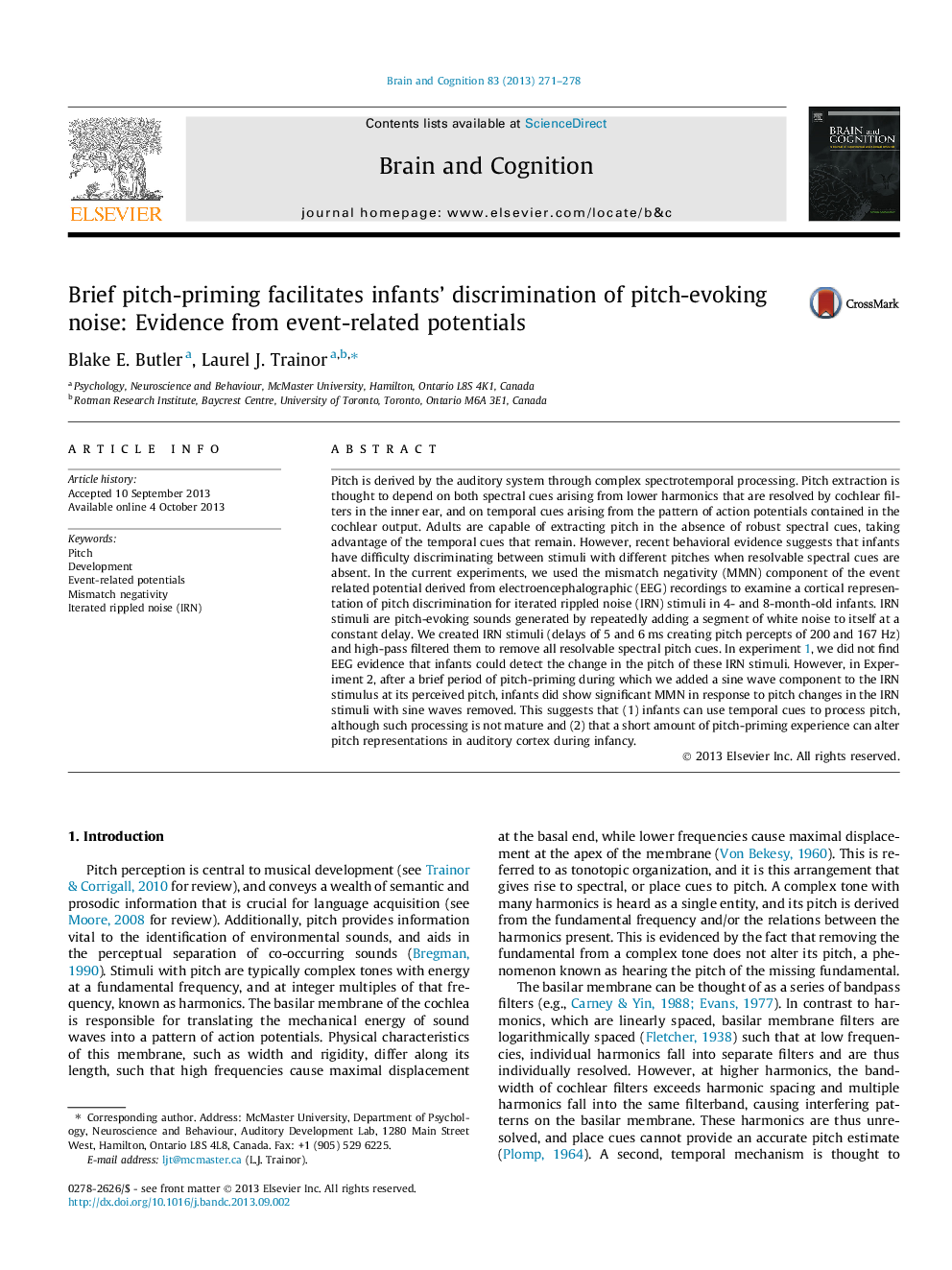| کد مقاله | کد نشریه | سال انتشار | مقاله انگلیسی | نسخه تمام متن |
|---|---|---|---|---|
| 924344 | 921220 | 2013 | 8 صفحه PDF | دانلود رایگان |

• Infants heard high-pass filtered IRN stimuli with no resolvable spectral content.
• Event-related potentials and mismatch negativity were used to index discrimination.
• 4- and 8-month-old infants discriminated IRN following a period of pitch-priming.
• Infant discrimination was weak relative to stimuli with resolvable spectral cues.
• Earlier behavioral data were confirmed by a cortical representation of discrimination.
Pitch is derived by the auditory system through complex spectrotemporal processing. Pitch extraction is thought to depend on both spectral cues arising from lower harmonics that are resolved by cochlear filters in the inner ear, and on temporal cues arising from the pattern of action potentials contained in the cochlear output. Adults are capable of extracting pitch in the absence of robust spectral cues, taking advantage of the temporal cues that remain. However, recent behavioral evidence suggests that infants have difficulty discriminating between stimuli with different pitches when resolvable spectral cues are absent. In the current experiments, we used the mismatch negativity (MMN) component of the event related potential derived from electroencephalographic (EEG) recordings to examine a cortical representation of pitch discrimination for iterated rippled noise (IRN) stimuli in 4- and 8-month-old infants. IRN stimuli are pitch-evoking sounds generated by repeatedly adding a segment of white noise to itself at a constant delay. We created IRN stimuli (delays of 5 and 6 ms creating pitch percepts of 200 and 167 Hz) and high-pass filtered them to remove all resolvable spectral pitch cues. In experiment 1, we did not find EEG evidence that infants could detect the change in the pitch of these IRN stimuli. However, in Experiment 2, after a brief period of pitch-priming during which we added a sine wave component to the IRN stimulus at its perceived pitch, infants did show significant MMN in response to pitch changes in the IRN stimuli with sine waves removed. This suggests that (1) infants can use temporal cues to process pitch, although such processing is not mature and (2) that a short amount of pitch-priming experience can alter pitch representations in auditory cortex during infancy.
Journal: Brain and Cognition - Volume 83, Issue 3, December 2013, Pages 271–278